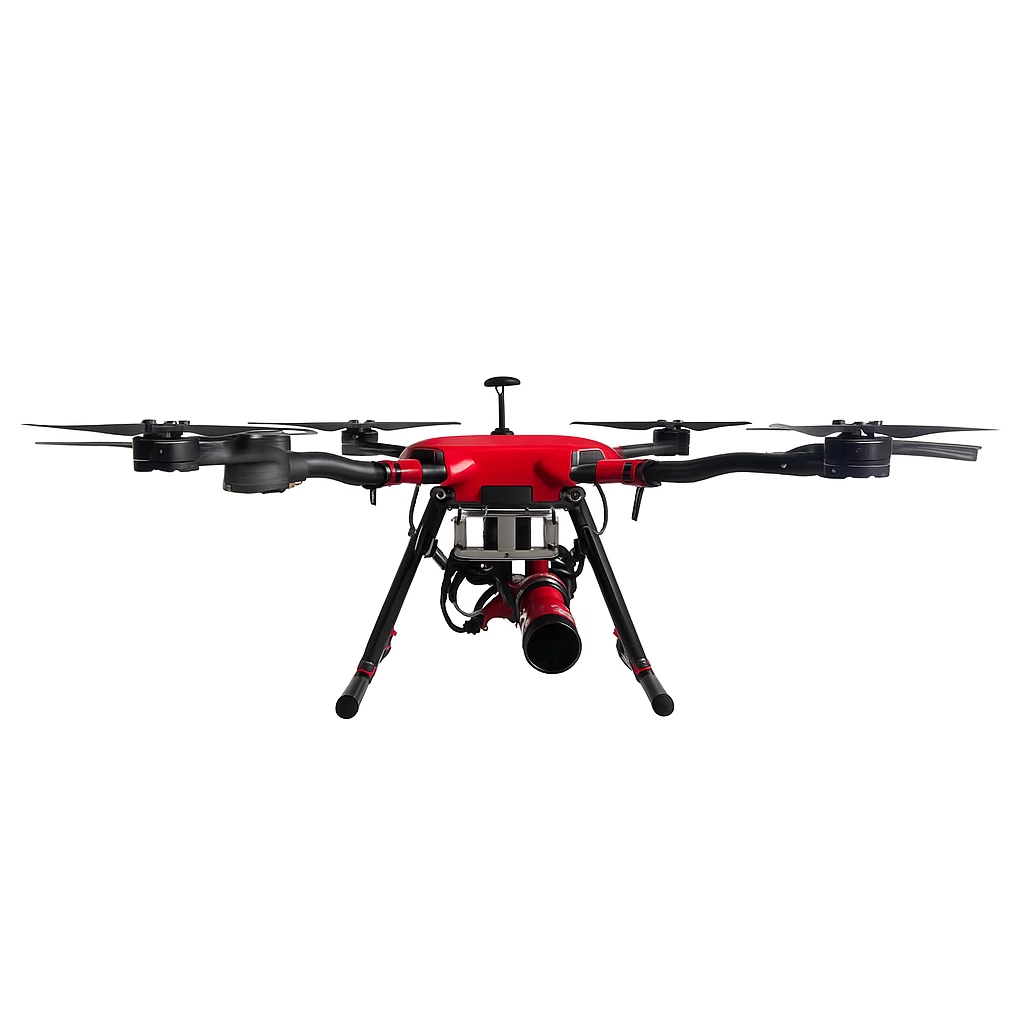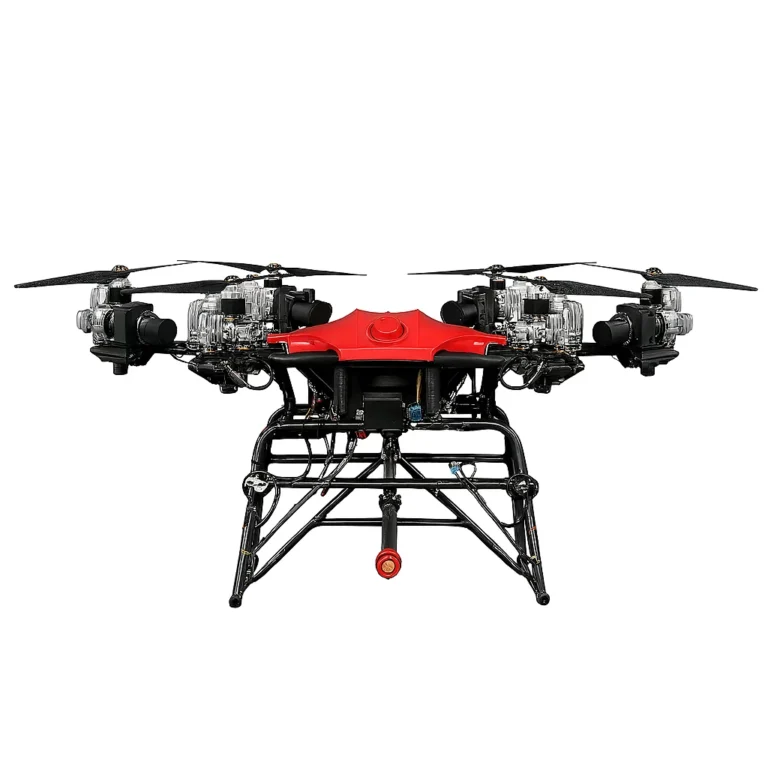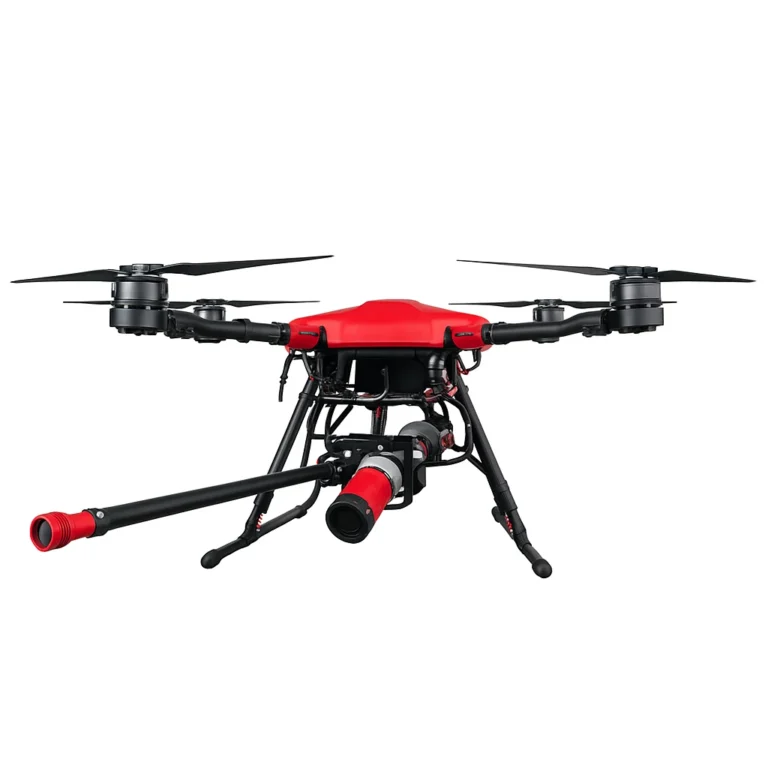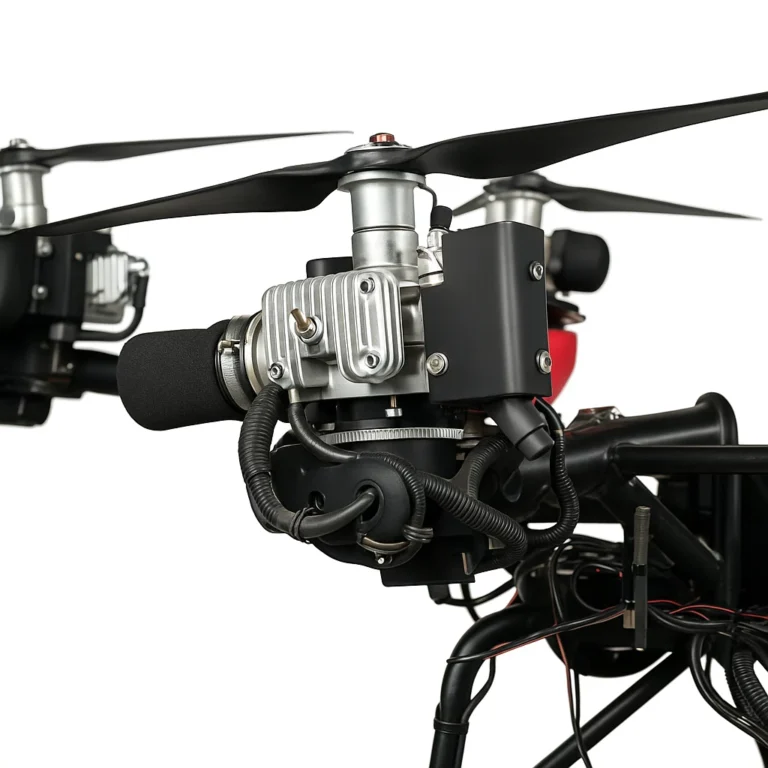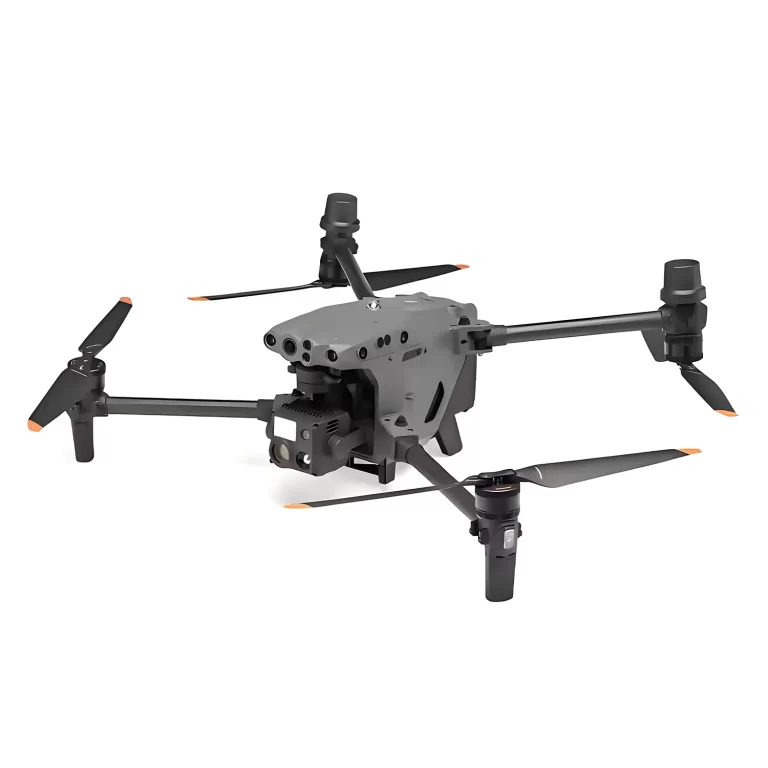Home » Horizontal Fire Suppression Drone
Horizontal Fire Suppression Drone
The Horizontal Fire Suppression Drone is a precision-engineered unmanned system developed for missions where direct, point-targeted extinguishing is required inside confined, obstructed, or high-risk structures. Unlike vertical-drop systems, this platform uses a directional launch mechanism to deliver extinguishing projectiles horizontally into enclosed rooms, corridors, machinery bays, and glass-sealed spaces. Built around a 100 kg payload class with EO/IR imaging and thermal analytics, the system aligns with operational principles referenced in FAA Part 107 for unmanned flight operations and NFPA 1906 wildland response framework, while using UL-recognized components for avionics and electrical assemblies.
The Horizontal Fire Suppression Drone is designed for precision suppression tasks where conventional aerial-drop UAVs cannot achieve direct line-of-sight access. Its core architecture centers on a servo-guided launch module capable of discharging up to four 25 kg suppression projectiles horizontally, enabling targeted delivery into sealed environments where fires may accelerate rapidly due to heat buildup, ventilation blockage, or structural constraints. Each projectile can contain dry chemical or liquid extinguishing agents formulated for Class A or Class B hazards, and the reinforced launch tubes deliver calibrated velocity sufficient to penetrate up to 12 mm of tempered glass so the agent can reach ignition points inside closed rooms or industrial enclosures. The drone integrates thermal-signature tracking alongside near-infrared life-signal detection to identify fire zones while automatically avoiding areas with detected human bio-signals, reducing the risk of accidental impact during semi-autonomous missions.
The EO/IR gimbal provides clear visuals for incident commanders, pairing high-resolution optical imaging with thermal contrast detection to identify hotspots through smoke, obstructions, or partial concealment. Data is streamed through encrypted dual-band telemetry (2.4 GHz / 5.8 GHz), providing stable command-and-control linkage and real-time situational feedback. The aircraft structure combines aviation-grade aluminum and composite shells to achieve a strong strength-to-weight ratio, maintaining stability up to Beaufort Scale 7 winds. The flight system supports GPS waypoint navigation, manual remote piloting, and semi-automatic deployment logic, enabling rapid engagement in under five seconds from mission start. This horizontally oriented suppression platform complements vertical-drop UAVs by addressing fire zones that require directional penetration rather than overhead dispersal, making it especially valuable for operations inside urban buildings, industrial tanks, hazardous material storage areas, and machinery corridors where conventional access is limited.
The Horizontal Fire Suppression Drone delivers directional suppression using a forward launcher that discharges four 25 kg projectiles with calibrated velocity for delivering agents directly into internal hazard zones. Thermal targeting and life-signal avoidance sensors work in tandem to isolate heat signatures while preventing launches toward areas with detectable human presence, supporting safer semi-autonomous engagement. The aircraft maintains a 100 kg payload class and operates with a 30-minute flight duration, supported by a 3,000-meter service ceiling, strong wind resistance, and rapid readiness for dynamic missions. Its EO/IR dual-sensor system enhances detection, targeting, and post-suppression assessment. The chassis uses modular composite-metal construction for durability, while optional upgrade packages allow integration of advanced targeting AI, alternative extinguishing agents, extended-range radios, and additional environmental sensors for specialized industrial or urban deployments.
Industrial plants: directs suppressant into enclosed machinery bays, cable corridors, and fuel-handling areas without personnel exposure.
Urban high-rise: penetrates tempered glass to deliver extinguishing agents into sealed office or apartment fire rooms.
Remote zones: supports perimeter suppression and hotspot cooling in brush, wildland, or rural fire lines.
Hazard materials sites: deploys agent without placing responders near volatile Class B fuel or chemical sources.
| Parameter | Specification |
| Product Name | Horizontal Fire Suppression Drone |
| Launch Mechanism | Servo-guided horizontal launcher |
| Fire Suppression Rating | 1A 21B (UL classification methodology) |
| Payload Capacity | 100 kg (220 lbs) |
| Projectile Capacity | 4 × 25 kg (55 lbs) |
| Glass Penetration | Up to 12 mm (0.47 in) tempered glass |
| Maximum Altitude | 3,000 m (9,842 ft) |
| Flight Duration | 30 minutes |
| Wind Resistance | Beaufort Scale 7 (50–61 km/h; 32–38 mph) |
| Deployment Readiness | < 5 seconds |
| Sensors | Thermal IR, NIR life-signal detection, EO/IR gimbal |
| Communication | Encrypted 2.4/5.8 GHz telemetry and video |
| Control Modes | Manual, semi-autonomous, waypoint GPS navigation |
| Frame Material | Aviation-grade aluminum alloy + composite shell |
| Operating Temperature | −10°C to +50°C (14°F to 122°F) |
| Optional Modules | AI targeting, long-range radios, agent variants |
The Horizontal Fire Suppression Drone uses avionics and electrical components sourced from UL-recognized part families, while operational principles align with FAA Part 107 requirements for U.S. unmanned aircraft missions. Its fire-response logic references NFPA 1906 wildland response framework for UAV deployment methodology, though the system itself is not a certified fire apparatus. The platform is fully customizable for OEM programs, including custom suppression agent packages, extended-range communication systems, specialized targeting sensors, industrial-grade corrosion coatings, and application-specific payload modules.

